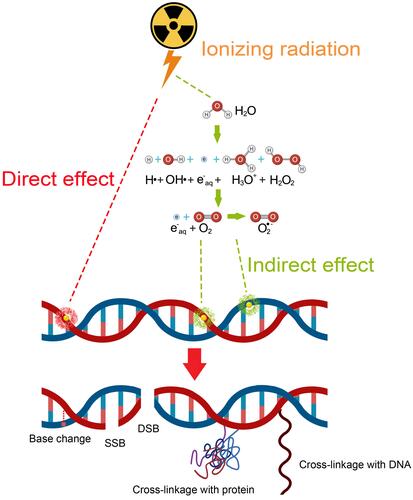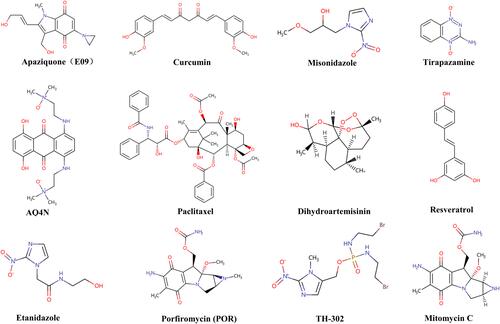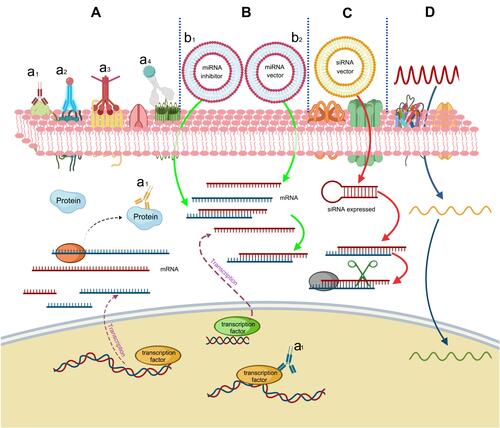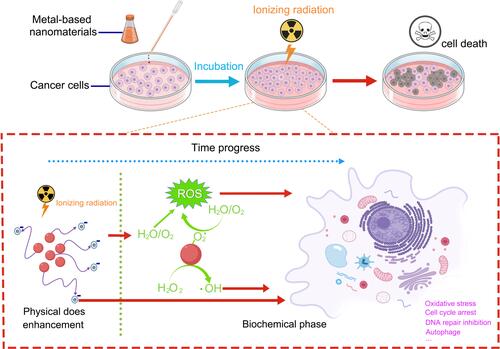Figures & data
Figure 1 Schematic of the mechanism of ionizing radiation (IR) in RT. In the case of direct effect, IR directly damages the DNA, which, if unrepaired, results in cell death or permanent growth arrest. In the case of indirect effect, ROS are formed by the radiolysis of a large amount of water and oxygen, and then the ROS damage the DNA. There are many types of DNA damage, such as base change, SSB, DSB, cross-linkage with protein or with other DNA molecules.

Table 1 Some Macromolecule Radiosensitizers Discussed in This Paper
Table 2 The List of Nanomaterials Used for Radiosensitization
Figure 2 Molecular structures of some representative small-molecule radiosensitizers discussed in this paper.

Table 3 Registered Ongoing Clinical Trials (https://Clinicaltrials.gov/) of Small-molecule Chemical Radiosensitizers
Figure 3 Radiosensitization mechanism of macromolecules. (A) Proteins and peptides. (a1) Direct interaction of key proteins. (a2) Loading of radioactive seeds. (a3) Radiosensitizers delivery. (a4) Conjugation with nanomaterials. (B) miRNAs can then bind with mRNAs to implement radiosensitization. (b1) Downregulation by inhibitors. (b2) Upregulation. (C) siRNAs can improve radiosensitivity by binding and degrading complementary mRNAs. (D) Oligonucleotides improve the radiosensitivity by complementary binding with DNAs.

Figure 4 Radiosensitization mechanism of metal-based nanomaterials. The process contains physical and biochemical sensitization mechanism.

Table 4 Clinical Translation of Some Nanoradiosensitizers
